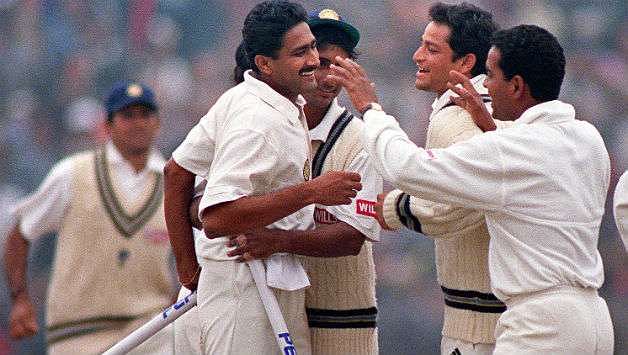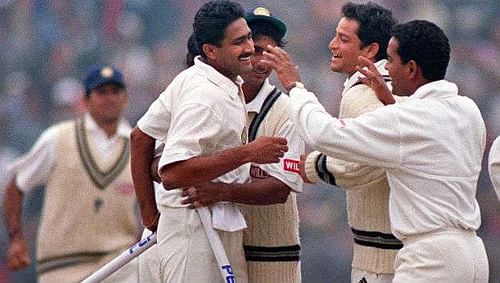
Waqar Younis responds to Wasim Akram's claims about spoiling Anil Kumble's perfect score
As much as the game has been skewed in the batsman’s favour, there are few better sights than watching a spinner bamboozle the opposition with their guile. While each wicket is a prize in itself, there can’t possibly be a bigger achievement, or a bigger win, for a bowler to capture all ten opposition wickets. It holds far more prominence than a bullseye or a spare in bowling, for the others are momentary and instantaneous instances of victory, while this is a 10/10 on a scoresheet.
Anil Kumble achieved what only one other bowler has been able to in the history of the international cricket. Against arch-rivals Pakistan in 1999, months before the start of the Indo-Pak Kargil war, Kumble claimed all ten Pakistani batsmen, listing down his name in the annals of history, just below the first to the distinction, England’s Jim Laker (1956).
Six years after the astonishing achievement, Pakistan legend Wasim Akram opened up a can of worms by revealing something about how his teammate, Waqar Younis, almost sabotaged Kumble’s attempt to get the perfect ten.
In an interview with DNA in 2005, he conceded that Waqar Younis, his partner during their last wicket stand, pondered over the idea of running himself out to prevent the Indian spinner from reaching the magical mark.
“You can’t deny him the feat if he is destined for it. But I can assure you that I’m not going to give my wicket to Kumble’,” is what Wasim Akram responded with.
On the eighteenth anniversary of the incident, Virender Sehwag shared a snippet of the interview, reigniting the doused flame between Akram and his former teammate regarding the incident.
Waqar Younis, however, wasn’t amused by Wasim Akram’s claims, stating that age was catching up with his former captain.
In the end, it was Akram who fell to Kumble’s trap, getting a thick edge off his intended defensive stroke that nestled in the hands of VVS Laxman at short leg, becoming Kumble’s tenth victim and sparking off wild celebrations of the fielding team. Before Akram’s dodgy 37 and the opening pair’s 101-run stand, only one other Pakistani batsman was able to go past even the two-digit mark.
In the 1956 Ashes, Jim Laker accounted for nineteen Australian victims, taking all ten in the fourth innings to end with astounding figures of 51.2-23-53-10.
There have been previous instances of players trying to ruin an opponent’s quest for a major landmark by playing around the laws of the game. A few years ago, Suraj Randiv purposely bowled a no-ball that prevented Virender Sehwag from reaching a century in the closing stages of an ODI.
It would have been disheartening if Kumble had not been able to dismiss the last batsman after capturing the other nine, but record or no record, Anil Kumble was arguably India’s biggest match-winner in Test cricket.

